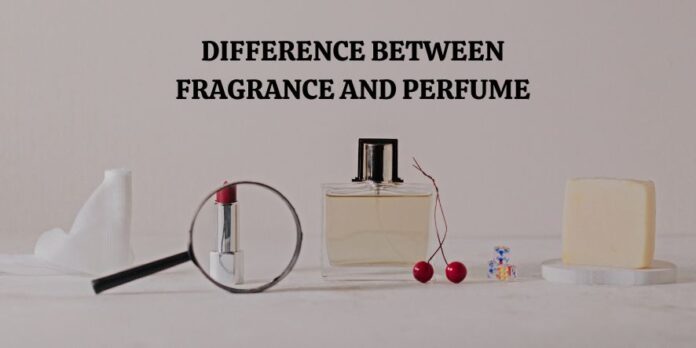When we step into a world of scents, it’s easy to get lost in the terminology surrounding the various aromatic concoctions available. Two terms that often cause confusion are “fragrance” and “perfume.” While they might seem interchangeable, they actually represent distinct categories within the world of scents. In this article, we will delve into the intricate differences between fragrance and perfume, exploring their compositions, strengths, classifications, and applications.
The Composition
Perfume:
Perfume, in its broadest sense, refers to a concentrated mixture of aromatic compounds, natural extracts, and synthetic chemicals that are designed to create a pleasing scent. It’s a blend carefully crafted to evoke emotions, memories, and sensations. Perfume compositions typically consist of a combination of top, middle, and base notes. These notes are individual scents that unfold over time as the fragrance interacts with the wearer’s body chemistry.
Top Notes:
These are the initial scents that are detected when the perfume is applied. They are often light and refreshing but evaporate relatively quickly. Common top notes include citrus, floral, and herbal scents.
Middle Notes:
Also known as heart notes, these scents emerge after the top notes dissipate. Middle notes are the core of the fragrance and provide depth and complexity. Floral, fruity, and spicy notes are often found in this layer.
Base Notes:
These are the foundation of the perfume, appearing once the middle notes have settled. Base notes are usually rich and long-lasting, contributing to the fragrance’s overall longevity. Common base notes include woody, musky, and vanilla-like scents.
Fragrance:
“Fragrance” is a more general term used to describe any type of pleasant odor or aroma. It can encompass a wide range of scented products, from perfumes and colognes to body sprays and scented lotions. Fragrances are formulated with varying levels of intensity and complexity, making them suitable for different purposes and preferences. Unlike perfumes, which follow a specific composition structure, fragrances can vary widely in their ingredient combinations and overall structure.
Strength and Concentration
The concentration of aromatic compounds in a scented product significantly influences its strength, longevity, and price. Both fragrances and perfumes come in different concentrations, each catering to different preferences and occasions.
Perfume Strengths:
Perfumes are known for their high concentration of aromatic compounds, making them the most potent and long-lasting scented products available. The concentration of aromatic compounds in perfumes can range from 15% to 40% or even higher in some cases. This high concentration contributes to their lasting power on the skin, often lingering for hours or even an entire day.
Perfume (Parfum):
The most concentrated form of fragrance, perfume (parfum) contains around 20-40% aromatic compounds. It has the strongest scent and typically requires only a small amount for a noticeable effect.
Eau de Parfum (EDP):
EDP has a slightly lower concentration, usually around 15-20% aromatic compounds. It offers a strong scent that lasts for several hours, making it a popular choice for evening wear.
Fragrance Strengths:
“Fragrance” is a term used to describe a scented product in various concentrations. These concentrations determine the intensity and longevity of the scent.
Eau de Toilette (EDT):
This is a lighter concentration, typically containing around 5-15% aromatic compounds. EDT fragrances are lighter and often need reapplication throughout the day.
Eau de Cologne (EDC):
With an even lower concentration of aromatic compounds (2-5%), EDC scents are lighter still and are often used for refreshing and revitalizing purposes.
Body Sprays and Mists:
These are the lightest versions of fragrances, with a concentration of around 1-3% aromatic compounds. They are designed to provide a subtle and short-lived burst of fragrance.
Classification and Application
Perfume Classification:
Perfumes are classified into various categories based on their ingredient composition and the overall character of the scent. Some common perfume categories include floral, oriental, woody, citrus, and fresh. Each category appeals to different preferences and occasions, allowing individuals to choose scents that resonate with their personal style and the mood they want to evoke.
Fragrance Application:
“Fragrance,” being a more general term, covers a wide range of scented products that serve different purposes and suit various settings. Fragrances can include not only perfumes but also colognes, body sprays, body lotions, and scented oils. The versatility of fragrances allows individuals to choose products that align with their needs, preferences, and the desired level of scent intensity.
Conclusion
In the realm of scents, the terms “fragrance” and “perfume” hold distinctive meanings that go beyond mere semantics. While both bring delightful aromas to our lives, they represent different concentrations, compositions, and applications. Perfumes are a specific type of fragrance known for their high concentration of aromatic compounds and complex compositions, while fragrances encompass a broader range of scented products with varying intensities. Understanding these differences empowers individuals to make informed choices when selecting scents that complement their personal style and the occasions they wish to enhance with a touch of olfactory elegance. Whether you’re drawn to the lasting allure of perfumes or the versatile charm of fragrances, the world of scents invites you to explore, experience, and embrace the captivating symphony of aromas that it offers.








